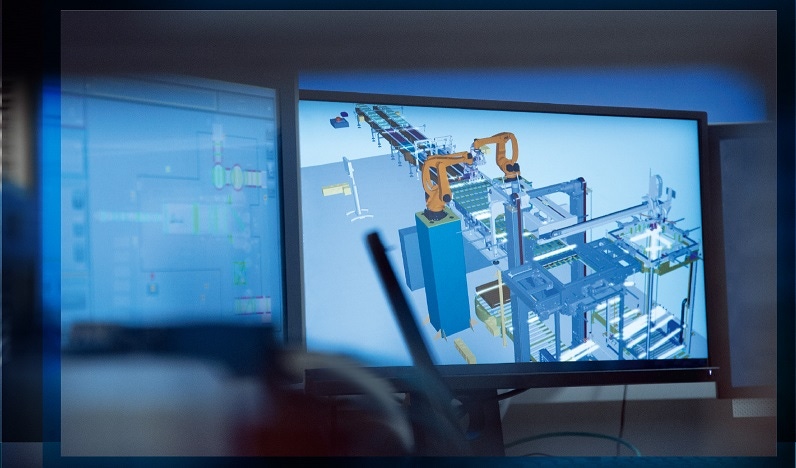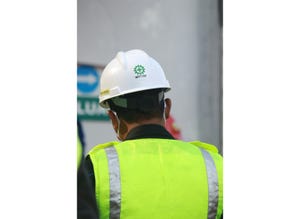Digital Twin Lowers Costs with Virtual Machine Commissioning
May 5, 2020

In the future the digital twin will become a key component of industrial production. KHS already uses models to virtually map the machine and conveyor system commissioning process.
With the help of smart, digital technologies, KHS is networking and automating production processes step by step so that machines, products, and complete lines can efficiently communicate and work with one another. “In particular what's known as the digital twin enables procedures to be transferred to a virtual environment by tracking and imaging all phases in a machine’s life cycle. All production processes and products can then be simulated virtually,” said Stefan Diesner, head of the Palletizing Product Center. Alternative, optimized production processes are displayed on the computer.
One of the major prerequisites for this is that engineering is consistent throughout the entire value chain in order to prevent what is known as data discontinuity at the interfaces between the various engineering disciplines, namely mechanical components, electrical equipment, and software. Unlike the way a lot of work is done today, projects are not processed sequentially (i.e. separately and consecutively). Instead, in an ideal scenario all departments work in parallel across their respective disciplines on the implementation of a project and share a common data model – the basis for the digital twin that depicts every last detail of a system virtually and permits precise simulation.
The Shared Data Challenge
For an engineering company like KHS, which not only manufactures a number of different machines but whose research and development departments also have a colossal geographical spread, this is a major challenge. The KHS engineers at the Palletizing Product Center in Worms have been working on the virtual depiction and simulation of machines and system parts for 13 years. Simulation or virtual commissioning especially lend themselves to use with logistics systems such as palletizers or conveyors.
“Our aim is to continue to shorten lead times and lower fault-related costs by expanding our virtual commissioning setup,” explained Diesner. In order to estimate just how high these savings can be, it helps to take a look at the rule of 10. This states that the cost of fault correction increases by a factor of ten the later in the process an error is discovered. If a fault is only found and eliminated during factory commissioning, for example, the financial burden is 10 times higher than if the correction had already been made to the software engineering during virtual commissioning.
Reduced Time and Effort
A further objective of the current project is to reduce the amount of time and effort required for virtual commissioning. One basic condition here is that the data is consistent. “With virtual commissioning we have control over data consistency,” Diesner explained. “All data is generated and stored at our production site, albeit still in a number of different systems. Further steps must be taken here before efficient and bidirectional access to this data is provided by a virtual engineering tool that includes simulation. Once this has been done, we can configure the system according to customer specifications or quickly and efficiently commission adapted machine designs on screen.”
KHS USA Inc., Waukesha, WI 262-797-7200 www.khs.com
For more articles, news, and equipment reviews, visit our Instrumentation & Control Equipment Zone
Click here for Instrumentation & Control Equipment Manufacturers
You May Also Like


